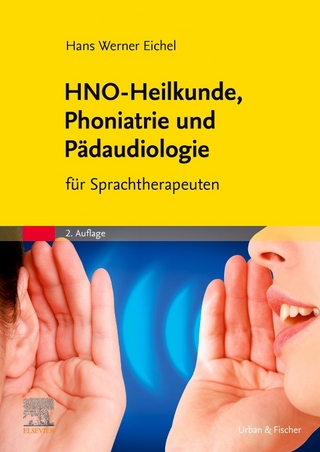
Cognitive-Communication Disorders of Dementia
Plural Publishing Inc (Verlag)
978-1-59756-564-6 (ISBN)
- Titel ist leider vergriffen;
keine Neuauflage - Artikel merken
Written by internationally recognized experts, Cognitive-Communication Disorders of Dementia: Definition, Diagnosis, and Treatment, Second Edition provides students and practicing professionals with cutting-edge information on the diagnosis and treatment of cognitive-communication disorders associated with minimal cognitive impairment (MCI) and dementia-related diseases. KEY FEATURES: -Chapters on MCI and cognitive stimulation therapy to delay or prevent evolution to dementia -A chapter on memory systems, cognition, and communication that provides a foundation for understanding the unique cognitive profiles of common dementia-related diseases -Three chapters devoted to therapy and care planning -A chapter on assessment and differential diagnosis Dr. Kathryn A. Bayles and Ms. Cheryl K. Tomoeda have more than 30 years of experience researching the effects of age-related diseases on communication, and the diagnosis and treatment of those diseases. Their research has been supported by the NIH, the Alzheimer's Association, the Andrus Foundation, as well as the University of Arizona and the University of Central Arkansas.Their two standardized tests for assessing communicative function in individuals in various stages of dementia are widely used by professionals in the field.
This comprehensive text, Cognitive-Communication Disorders of Dementia: Definition, Diagnosis, and Treatment, Second Edition, is the culmination of Dr. Bayles and Ms. Tomoeda's lifelong studies and research and is a valuable resource for students and clinicians alike.
Kathryn Bayles, PhD, is an internationally known expert on the cognitive-communicative disorders of dementia. Now Professor-Emerita at the University of Arizona, Dr. Bayles has served as Department Head of Speech, Language and Hearing Sciences and Associate Director for the National Center for Neurogenic Communication Disorders. Her research has received support from the National Institutes on Aging, Mental Health, Deafness and Other Communication Disorders, the Alzheimer's Association and the Robert Wood Johnson and Andrus Foundations. She is a Fellow in the American Speech-Language-Hearing Association and Honors recipient and a Past President of the Academy of Neurologic Communication Disorders and Sciences. Cheryl Tomoeda, MS, CCC-SLP, is Associate Director of Development for the University of Arizona College of Science after a 22-year career in the Department of Speech, Language, and Hearing Sciences. She is known for her work with Dr. Kathryn Bayles on the communication abilities of individuals with dementia. The two have collaborated on three other books, and co-authored two standardized tests for evaluating the cognitive-communication disorders of dementia, and conducted research on this topic for over 20 years.
Preface Acknowledgements Contributors Chapter 1. Speech Pathology, Mild Cognitive Impairment, and Dementia Introduction Communication Defined Rationale for Therapy Neuroplasticity Memory Systems and Their Selective Vulnerability to Disease Cognitive Reserve Summary of Important Points References Chapter 2. Cognition, Memory, and Communication Cognition and Memory The "Company of Cognition" Memory Defined Sensory Memory Working Memory Long-Term Memory Relation of Cognition and Memory to Communication Production of Linguistic Information Comprehension of Linguistic Information Summary of Important Points References Chapter 3. MCI: Mild Cognitive Impairment Introduction Clinical Presentations of MCI Prevalence of MCI Diagnostic Criteria for MCI Conversion to Dementia Conversion Rate by MCI Subtype Number of Deficits and Conversion to Dementia Risk and Protective Factors Cognitive Deficits Cognitive-Linguistic Deficits in MCI Type of Language Changes Conclusion Summary of Important Points References Chapter 4. Alzheimer's Dementia Alzheimer's Disease Introduction Diagnostic Criteria for AD Neuropathology of AD Risk Factors for AD Age Family History of AD Less Education History of Head Trauma Loneliness Gender Maternal Age Apolipoprotein E4 Allele Mild Cognitive Impairment Predictors of Disease Progression Protective Factors Effects of AD on Cognitive and Communicative Functions Early Stage Middle Stage Late Stage Summary of Important Points References Chapter 5. Dementia and Down Syndrome Introduction Risk of Developing Alzheimer's Disease Common Features in People with DS Prevalence of Dementia in DS Diagnosing Dementia in Individuals with DS A Study of the Cognitive-Communicative Profiles of DS Adults with and without Dementia Language and Communication Skills in Adults with DS Premorbid Language Language Change in Dementia Cognitive and Behavioral Measures Appropriate for Individuals with DS Summary of Important Points References Chapter 6. Vascular Dementia Introduction Neuropathology Diagnostic Criteria Criteria for Presence of Cognitive Disorder Criteria for Presence of VaD Criteria for Probable VaD Criteria for Possible VaD Criteria for Vascular Mild Cognitive Impairment Criteria for Probable VaMCI Criteria for Possible VaMCI Unstopable Vascular VaMCI Risk Factors for VaD Aging Hypertension Family History Ethnicity and Gender Diabetes Mellitus Lifestyle Effects of VaD on Cognitive and Communicative Functioning Vascular Pathology May be a Trigger for Dementia Observations About the Effects of Vascular Pathology on Cognition and Communication Comparison of Effects of Cortical and Subcortical Pathologies Cortical Pathologies Subcortical Pathologies VaD compared with AD Observations from Course-of-Disease Studies Conclusion Summary of Important Points References Chapter 7. Parkinson's Disease and Dementia Parkinsonism and Parkinson's Disease Incidence and Prevalence of PD and Dementia Among Persons with PD Risk Factors for PD Risk Factors for Development of Dementia Neuropathology of PD Symptoms of PD Movement Symptoms Other Associated Symptoms Diagnostic Criteria MDS Task Force Criteria for Diagnosing PDD Neuropsychological Characteristics of PD and PDD PD Without Dementia PD with MCI and Dementia Relation of PDD, Dementia with Lewy Bodies, and AD Comparison of the Dementia of PD and AD Effects of PD and PDD on Communicative Function Communicative Function in Nondemented PD Patients Individuals with PD and Dementia Compared with Individuals with AD on the ABCD Summary of Important Points References Chapter 8. Dementia and Lewy Body Disease Lewy Body Disease Diagnostic Criteria and Symptomatology Consortium Consensus Criteria for Diagnosis of Dementia Caregiver Report of Early Symptoms Incidence and Prevalence Risk Factors for DLB Effects of LBD on Cognition Executive Function Deficits Visuoperceptual and Spatial Functions Memory and Attention Cognitive Profile of LBD Compared to AD Effects of LBD on Language and Communicative Function A Care of Pure LBD Summary of Changes in Communicative Functioning Summary of Important Points References Chapter 9. Dementia and Huntington's Disease Overview and Genetics of Huntington's Disease Neuropathology of HD Symptomatology Affect and Motor Symptoms Effects of HD on Speech Disease Effects on Cognition Language Symptoms Striatal Degeneration and Language Cognition and Communication Summary of Important Points References Chapter 10. Frontotemporal Dementia Introduction Consensus Terminology and Diagnostic Criteria Behavioral Presentation Behavioral Variant Frontotempral Dementia Language Presentation: Primary Progressive Aphasias Variants of PPA Frontotemporal Dementia and Amyotrophic Lateral Sclerosis Effects of ALS-FTD on Language Summary of Important Points References Chapter 11. Assessment of Cognitive-Communicative Disorders of Dementia Introduction The Process of Assessment Prior to Testing Review the Patient's Chart Arrange for a Good Testing Environment During Testing Check Vision Check Hearing Check Literacy Take Steps to Reduce Test-Taking Anxiety Be Alert to Depression Be Alert to Drug Affects on Performance Use Appropriate Tests Assessment of MCI due to AD Screening for MCI Comprehensive Neuropsychological Approach to Screening for MCI Montreal Cognitive Assessment Repeatable Battery for the Assessment of Neuropsychological Status Assessment of AD Screening for AD Comprehensive Evaluation of Cognitive-Communicative Functioning Differential Diagnosis Differentiating Mild AD from Delirium and Depression Differentiating Mild AD from Frontotemporal Dementia Presenting with Progressive Changes in Behavior Differentiating Mild AD from FTD Presenting with Progressive Changes in Language (Primary Progressive Aphasia and Its Variants) Differentiating AD from Vascular Dementia Differentiating Mild AD from Dementia with Lewy Body (DLB) and Parkinson's Disease with Dementia (PDD) Summary of Important Points References Chapter 12. Cognitive Intervention and MCI Kim McCullough, MD Introduction Forms of Cognitive Intervention Developing a Cognitive Intervention Program for MCI What Outcome Measures Should Be Used to Document Progress? What Is the Typical Session Format for CIPs? Key Element 1: Repetition-Based Focus on Cognitive Domains Key Element 2: Provide Direct Training of Strategies and Functional Skills Key Element 3: Empower Clients with Education Regarding Healthy Aging and Brain Habits Key Element 4: Provide Goal-Oriented Social Opportunities that Support Cognitive Engagement Conclusion Summary of Important Points References Chapter 13. Treatment: Direct Intervention Introduction Treatment Guidelines Strategies for Successful Intervention Facilitating Perception of Stimuli Consider Span Capacity of Working Memory Control of Task Complexity Minimize Error Responses Recognition Is Easier Than Recall Use Retrieval Cues that Reflect Support Given at Encoding Allow More Time to Respond Avoid Having Client Multitask Using the Principles of Neuroplasticity to Support Learning and the Maintenance of Knowledge and Skills Attention Reward and Emotion are Related Stimulation Priming Active Engagement Reminiscence Elaborate Encoding Repetition Intensity, Duration, Constraint Summary of Important Points References Chapter 14. Indirect Interventions for Cognitive-Communication Disorders of AD Introduction Linguistic Modifications Improving Language Comprehension Improving Production of Language If the Patient Wishes to Write a Letter, Supply the Materials, a List of News Items, and a Picture of the Letter's Intended Recipient Computer Supports Computer-Based Assistive Technology "Life Story Work" A House as a Cognitive Orthotic Caregiver Counseling Basics Creating a Safe Environment Music Having Something to Nurture Supporting Feeding Reducing Verbal Perseveration and Disruption Summary of Important Points References Chapter 15. Care Planning Introduction The Law and Medicare Regulations Minimum Data Set (MDS) Resident Assessment Protocols (RAPs) Centers for Medicare and Medicaid Services Role of the SLP A Relevant Question Can SLPs Do Cognitive Therapy? Medicare Cap on Amount of Service Dollars Using Test Performance to Develop Treatment Plans Restorative Care Plan: A Case Example Functional Maintenance Plan: A Case Example Documentation Is Critical Evaluation and Plan of Care Progress Notes Treatment Encounter Notes Documentation Pitfalls Caregiving Health Risks of Caregiving Gender and Caregiving Family Strife and Violence Factors That Influence Caregiver Burden and Stress Family Counseling Culture Matters in Counseling Emphasize What the Patient Can Do Caregiver Education and Training Summary of Important Points References Index
| Zusatzinfo | B/W |
|---|---|
| Verlagsort | San Diego |
| Sprache | englisch |
| Maße | 203 x 178 mm |
| Gewicht | 499 g |
| Themenwelt | Medizin / Pharmazie ► Gesundheitsfachberufe ► Logopädie |
| Medizin / Pharmazie ► Medizinische Fachgebiete ► Geriatrie | |
| ISBN-10 | 1-59756-564-4 / 1597565644 |
| ISBN-13 | 978-1-59756-564-6 / 9781597565646 |
| Zustand | Neuware |
| Haben Sie eine Frage zum Produkt? |
aus dem Bereich


